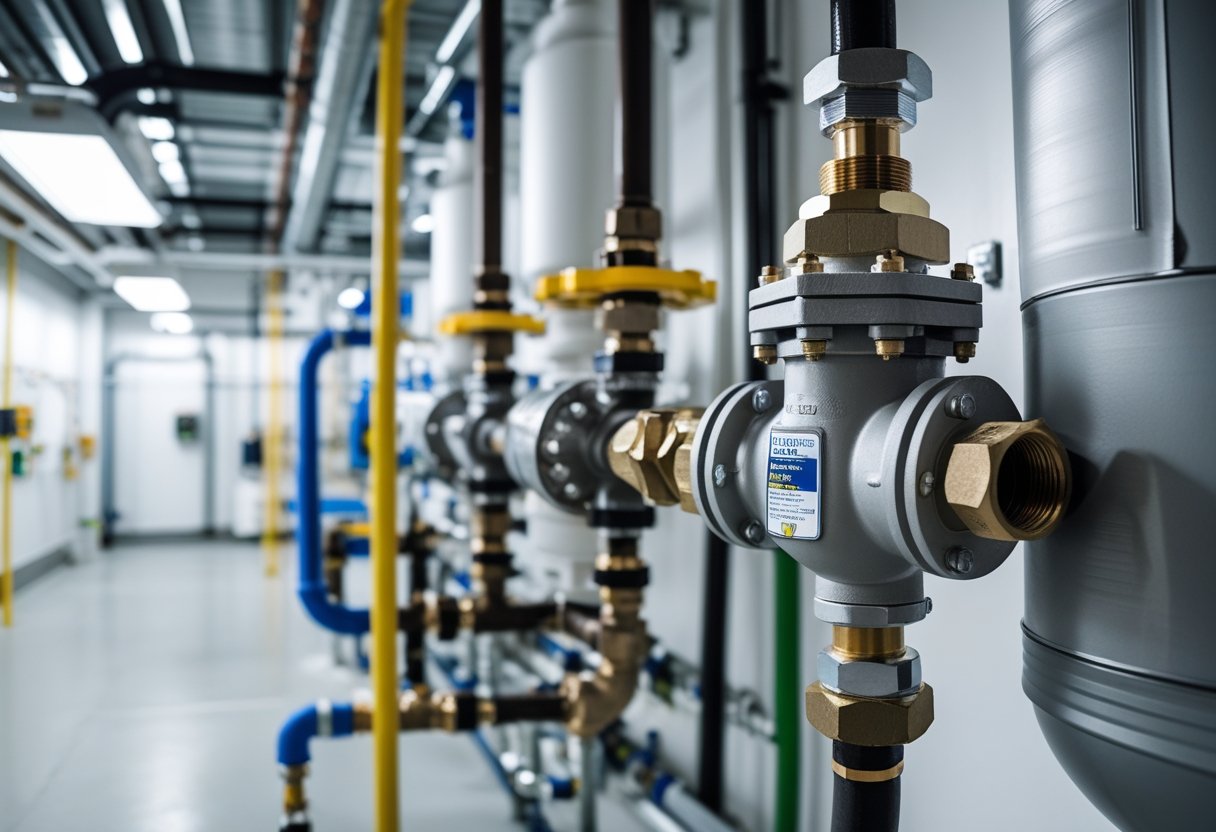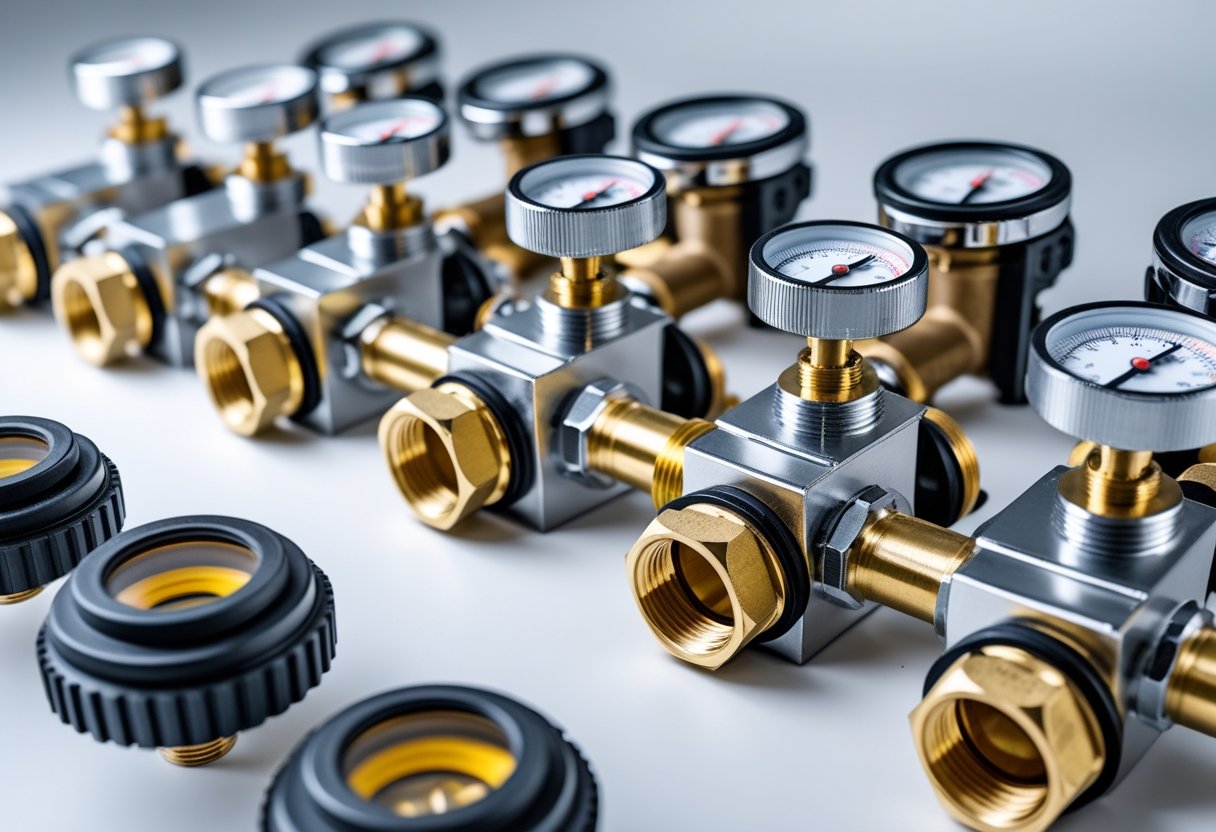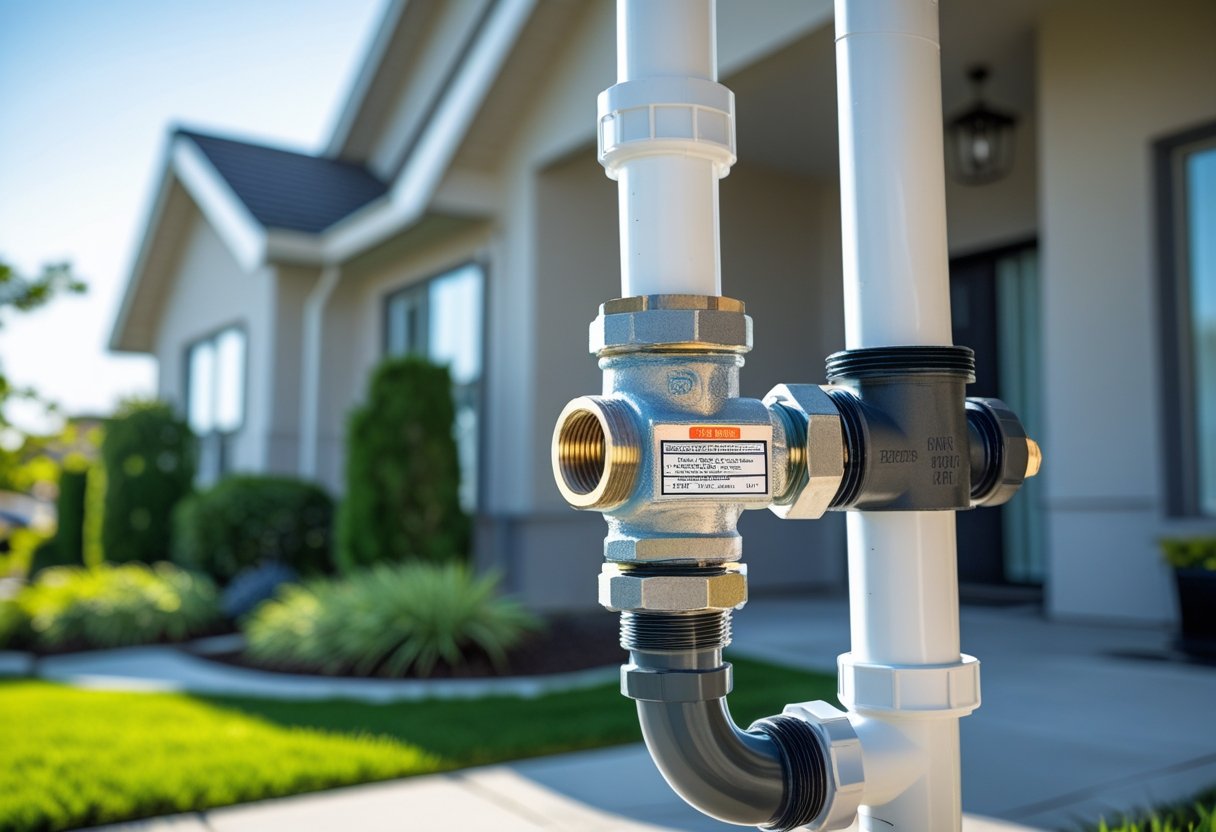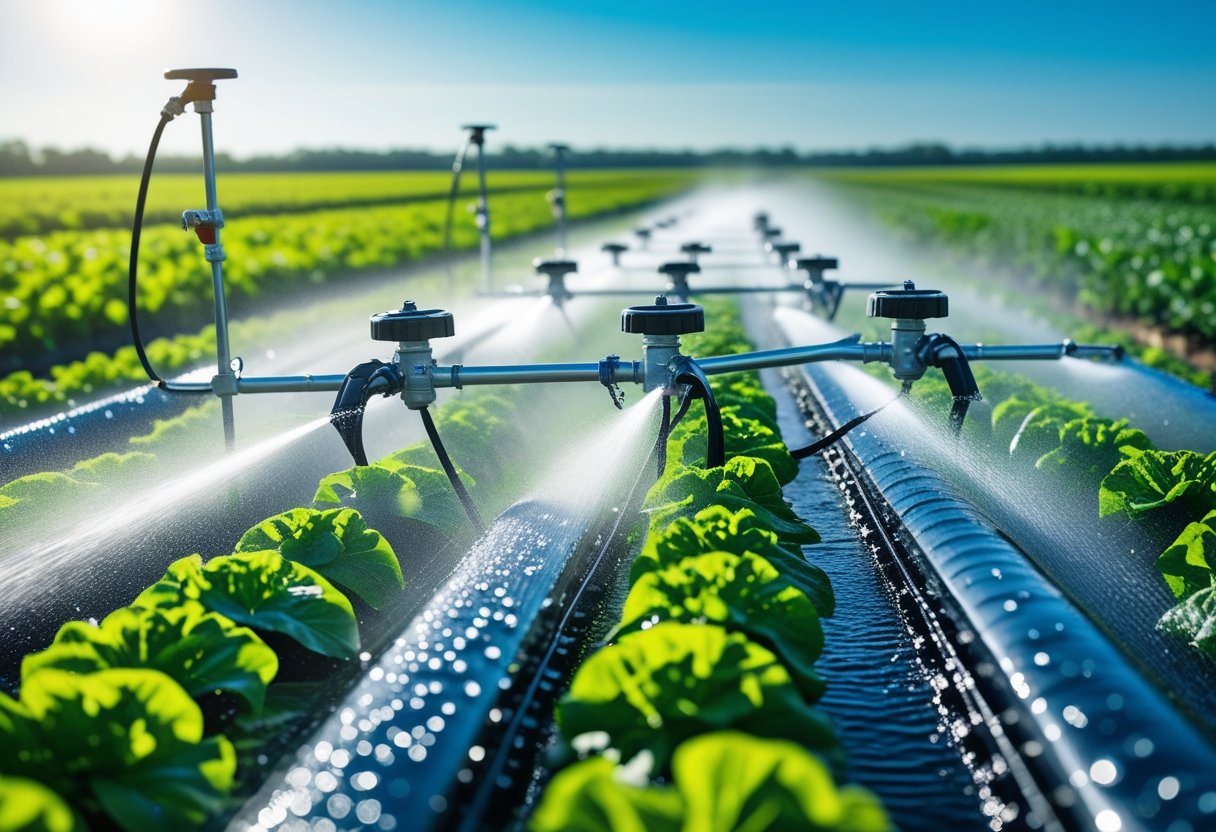If you’ve got a backflow preventer on your property, regular inspection is crucial for keeping your water safe and clean. Residential backflow preventer inspection checks that your device works properly to stop contaminated water from flowing back into your drinking supply. It’s about protecting your family’s health and staying on the right side of local regulations.
Backflow preventers don’t last forever—they can wear out or get damaged. If you get your system tested every year, you’ll dodge nasty surprises and expensive repairs. At Pacific Backflow, we handle quick, reliable testing all over San Diego County, so your preventer passes inspection and you stay compliant without much stress.
You should know where your device is and why testing matters. Whether you’re looking for an inspection, a repair, or a new install, the right care keeps your water clean and your system up to code.
What Is a Residential Backflow Preventer?
A backflow preventer keeps your home’s water safe by stopping dirty water from sneaking back into your clean supply. It’s a small thing, but it plays a big role in protecting your family’s health and meeting safety rules. Knowing what it does—and where it’s installed—makes it a lot easier to take care of your plumbing.
Function and Importance
A residential backflow preventer blocks water from reversing into your clean pipes. Sometimes, when water pressure changes, contaminants like dirt, chemicals, or bacteria might try to slip into your drinking water.
By letting water flow just one way, the device shields your household from polluted water that can make you sick. It also helps you meet local health codes, which usually require these devices to be installed and tested now and then.
Types of Backflow Preventers
There are a few types out there, but for homes, you’ll usually run into:
- Reduced Pressure Zone (RPZ) Valve: Heavy-duty protection, great for high-risk contamination spots.
- Double Check Valve Assembly (DCVA): Two valves for backup, good for areas with a bit less risk.
- Pressure Vacuum Breaker (PVB): Stops backsiphonage, especially common in irrigation setups.
Each version has its quirks, but they all aim to keep your water safe. Which one you need depends on local rules and your plumbing.
Common Installations in Homes
You’ll often find backflow preventers outside—on hose connections or irrigation systems. These spots are more likely to get exposed to dirt or garden chemicals if backflow happens.
Inside, sometimes you’ll see one hooked up to a water heater or other plumbing fixture where pressure can shift. Regular inspection and testing make sure they’re working as they should. Pacific Backflow handles testing and repairs across San Diego County to keep your preventer in shape.
Why Regular Backflow Preventer Inspection Matters
Regular inspections keep your water safe, help you follow the law, and prevent expensive headaches. Checking your backflow preventer lets you catch problems early, before they cause trouble or break any rules.
Protecting Drinking Water
Your backflow preventer keeps dirty water out of your clean lines. If you skip inspections, little issues can sneak by. That’s how bacteria or chemicals might end up in your drinking water.
Testing makes sure your device is actually doing its job. If it fails, waste or harmful stuff could get into your water. An inspection spots these problems before they get serious.
Pacific Backflow checks and maintains your gear to keep your water safe. They look over all the parts and make sure everything’s working.
Complying With Local Regulations
In places like San Diego County, the law says you need annual backflow testing. Inspections prove you’re following the rules. Without proof, you might face fines or even get your water shut off.
Certified techs do inspections that meet city and water district standards. When your preventer passes, they file reports for you—so you don’t have to sweat the paperwork.
Skipping inspections can get you in trouble. Staying up to date means you avoid penalties and hassles.
Preventing Costly Repairs
A backflow preventer that never gets checked can start leaking or just break down. Small issues can damage your plumbing and water supply, leading to some pretty expensive fixes.
Annual inspections catch wear and tear before it gets out of hand. It’s way cheaper to fix a small problem than to swap out the whole system. Regular care also helps your device last longer.
Pacific Backflow offers fast inspections and can point out repairs before things get worse. Their service helps you avoid surprises and keep your plumbing safe.
How Residential Backflow Preventer Inspections Work
Wondering what actually happens during an inspection? Knowing the steps can help you stay on top of water safety and local codes. Inspections involve a careful look at your device to make sure it’s blocking dirty water from sneaking into your clean supply. The pros use special tools and a few standard steps to get the job done.
Inspection Process Overview
Your backflow preventer inspection starts with a certified tester hooking up testing gear to your device. They run water through the system and check that it only flows one way. They’re on the lookout for leaks, blockages, or busted valves that could let in contamination.
Usually, the whole thing takes 30 to 60 minutes, depending on your setup. If the tester finds any problems, they’ll let you know right away and suggest repairs or a replacement. After the test, you’ll get a report that shows if your backflow preventer passed or failed.
Inspection Tools and Equipment
During an inspection, the tester brings a specialized test kit built for backflow devices. This kit usually includes:
- Pressure gauges to check water flow and pressure
- Valve wrenches for adjusting or opening the device
- Leak detection tools for spotting cracks or damage
Certified testers know how to use these tools without messing up your plumbing. The gauges help them see if valves close right and keep water moving the right way. Sometimes, they’ll need extra tools if your device is tough to reach.
Typical Inspection Checklist
The tester works through a checklist, covering things like:
- Checking for leaks or rust around the device
- Testing valve operation to make sure each one opens and closes all the way
- Measuring pressure before and after the device
- Inspecting relief valves for proper function
- Looking for signs of wear or damage on pipes connected to the preventer
All these steps help make sure your backflow preventer is doing its job. Pacific Backflow’s team in San Diego County handles these checks quickly and accurately to protect your water.
How Often to Schedule Inspections
Not sure how often to get your residential backflow preventer checked? Staying on schedule keeps your water safe and keeps you out of trouble. You’ll want to check it regularly, pay attention to warning signs, and handle repairs as soon as something seems off.
Recommended Inspection Frequency
Plan to have your backflow preventer tested at least once a year. This yearly check isn’t just a good idea—most local regulations require it to keep your water supply safe. If your device is getting old or looks worn, you might need to test it more often.
Only certified testers can do official backflow inspections. You can do a quick visual check yourself, but real testing and repairs are a job for the pros. Keep your inspection records for at least three years.
If your preventer is protecting a high-risk area—like an irrigation system or a pool—consider more frequent tests. Pacific Backflow makes annual testing in San Diego County easy and reliable.
Identifying Signs of Needed Inspection
Keep an eye out for changes in water flow or pressure. Sudden drops or weird water flow might mean there’s buildup or damage inside the device.
Leaks around the device, or visible rust and sediment, are other red flags. If you see any of this, don’t wait until your next scheduled test—call for an inspection right away.
Remember, backflow preventers can fail even if you don’t notice anything wrong. That’s why annual testing is so important: it catches hidden problems before they mess up your water.
Choosing a Qualified Backflow Inspector
Picking someone to inspect your backflow preventer isn’t something to take lightly. You want a pro with the right licenses, certifications, and know-how to deal with any issues. Asking a few smart questions before hiring can save you headaches down the road.
Licenses and Certifications to Look For
Always hire an inspector who’s certified in backflow testing. This means they’ve finished the right training and passed a state or local exam. Certification proves they know how to test, maintain, and repair backflow devices the right way.
At the very least, look for a valid backflow tester certification and, if your area requires it, a plumbing license. Some places make inspectors renew their certification regularly, which is actually a good thing—it keeps them up to date.
Certified inspectors follow the laws and safety standards. They use the right tools and don’t miss important details. Pacific Backflow, for example, hires certified technicians who test and report results according to local codes.
Questions To Ask Before Hiring
Before you decide, ask about their experience, process, and pricing. For example:
- How long have you been inspecting backflow preventers?
- Are you certified and licensed in this state?
- Can you handle repairs if my device fails?
- How fast can you do the test and send reports to the water authority?
- What do you charge for testing and any follow-up work?
It’s great if the inspector handles reporting for you—less paperwork for you, and it keeps you compliant. Also, ask if they offer emergency or same-day service, just in case.
Go with someone who’s got a solid reputation and communicates clearly. Pacific Backflow covers all of San Diego County with friendly, reliable testing. Asking the right questions helps you find someone equally dependable.
What Happens If You Fail an Inspection?
So, what if your backflow preventer doesn’t pass inspection? Basically, your device isn’t doing its job, and your water might not be safe. Here’s what usually goes wrong and what you’ll need to do to fix it.
Common Issues Detected
Backflow preventers often fail because of worn seals, corrosion, or leaks. Sometimes, check valves don’t hold up against water pressure, letting contaminated water sneak back in. Relief valves can also leak or stop working, making the device useless.
The technician might spot cracks or rust during the inspection. Even if your device passed last year, normal wear and tear can cause it to fail this time. Honestly, almost half of all residential backflow preventers fail their first test each year—it happens more than you’d think.
Steps for Remediation
If your device fails, act fast. The certified tester will give you a detailed report about what went wrong. You’ll need to repair the faulty parts or, if things are really bad, replace the whole preventer.
Repairs might mean fixing valves, swapping out seals, or dealing with leaks. If your device is old or seriously damaged, replacement is usually the way to go. Once you’ve fixed things up, schedule a re-test to make sure everything works. Pacific Backflow can handle repairs or replacements and file your reports so you stay in line with San Diego County’s water rules.
Maintaining Your Backflow Preventer Between Inspections
To keep your backflow preventer working well, you’ve got to take care of it between inspections. That means a few simple tasks you can handle yourself, plus habits that help you avoid damage or problems before your next professional check.
Homeowner Maintenance Tips
Check your backflow preventer area regularly. Make sure it’s clear of dirt, leaves, or standing water—those can create problems or just make it harder to check the device.
Look for leaks or drips around the unit. Even small leaks could mean it needs repair before your next inspection. If something seems off, schedule a check with a certified tester as soon as you can.
Keep the device accessible. Clear away plants, tools, or anything else blocking it. Easy access lets technicians test and service your backflow preventer without hassle.
If winters get cold where you live, protect your backflow device from freezing. Use insulation or a protective box—ice can really mess things up.
Best Practices for Preventing Issues
Don’t use harsh chemicals or sprays near your backflow preventer. Those can eat away at the seals and parts inside.
Trying to repair or take apart the backflow preventer yourself? Probably not a good idea. Leave repairs to trained professionals to keep your water safe and stay on the right side of the law.
Keep an ear out for strange noises or watch for water pressure changes. Odd sounds or pressure drops might mean your backflow preventer isn’t working right.
Honestly, scheduling annual tests and repairs with certified technicians is the way to go. It’s just easier to keep your system compliant and your home’s water safe.
Understanding Inspection Reports
After an inspection, you’ll get a detailed inspection report. This report shows if your device works properly or needs repairs. It also tells you if your system meets local safety rules.
The report usually lists:
- Device type and location
- Test results (pass or fail)
- Any leaks or malfunctions found
- Suggestions for repairs or replacement
If your device passes, you can feel good knowing your water supply is safe. If it fails, the report spells out what has to be fixed to get things back on track.
A licensed professional needs to do the backflow testing. At Pacific Backflow, certified technicians handle the tests and send reports to water authorities, so you don’t have to stress about compliance.
Hang onto every inspection report for your records. They prove your backflow system got checked, and you might need them if the water district ever asks.
Got questions about your report? Reach out to the pros who did the inspection. They’ll walk you through the results and let you know what to do next to keep your water safe.
Cost of Backflow Preventer Inspection
A backflow preventer inspection usually costs between $50 and $150 for most homes. The price depends on where you live, the type of device, and whether it needs repairs.
If your backflow device passes, you just pay for the test. If it fails, there could be extra charges for repairs or even a replacement.
Here’s a rough idea of what you might pay:
ServiceTypical Cost Range Inspection and Testing$50 – $150Minor RepairsVaries, depending on issueFull ReplacementHigher, based on device type
Most places require annual testing to keep your water safe and avoid fines. A certified tech will check your backflow preventer, run the tests, and send the results to your water authority.
Pacific Backflow covers San Diego County with quick, reliable inspections. They’ll handle the paperwork and reporting so you don’t have to bother with it.
Regular inspections can save you a lot by catching problems early. Booking your test on time helps you meet local rules and keeps your water clean.
Frequently Asked Questions
You probably wonder how often to check your backflow preventer or what signs mean it’s failing. Some things you can do yourself, but there are steps that really need a professional’s touch. Inspections tend to uncover some common issues.
What is the recommended frequency for inspecting my home's backflow preventer?
Most places want you to test your backflow preventer once a year. Annual inspections keep things working and help you meet city requirements.
How can I tell if my backflow preventer isn't functioning correctly?
Watch for odd leaks, noises, or a sudden drop in water pressure near the device. If your water tastes or smells weird, your backflow preventer could be the culprit.
Do I need a professional to conduct a backflow preventer inspection, or can I do it myself?
You really should hire a certified technician. Pros have the right tools and know-how to check everything thoroughly and send the results to local authorities.
What are the common issues that an inspection might uncover in a residential backflow preventer?
Inspections might turn up worn parts, leaks, or debris build-up. Sometimes seals break or valves get stuck, which could let dirty water sneak back into your clean supply.
Could you guide me through the steps of a basic backflow preventer inspection?
First, the tester hooks up a device to the backflow preventer’s test ports. They check pressure and flow to see if it stops water from reversing. Then, they record the results and suggest repairs if something’s wrong.
Are there any legal requirements or regulations regarding backflow preventer inspections for homeowners?
Yep, there are. Most cities—San Diego County included—expect homeowners to get their backflow preventers tested and certified every year. It’s not just a box to check; it keeps your water safe and keeps you out of trouble with local fines.
If you need reliable backflow testing and inspections in San Diego, Pacific Backflow’s certified techs can handle everything—testing, repairs, reports—the whole deal, and they don’t waste your time.











